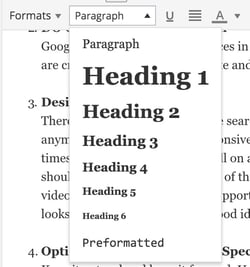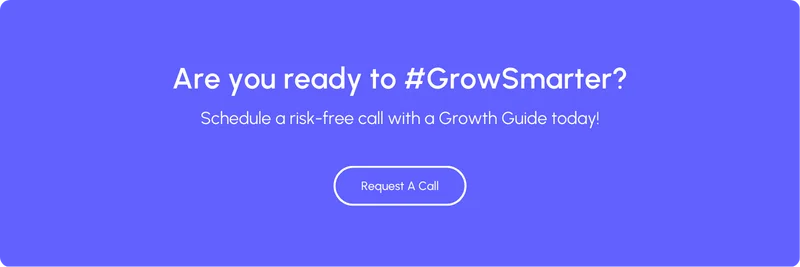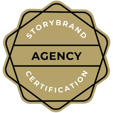99 Problems But Blog Writing Ain't One
by Kim Garmon Hummel, on Oct 3, 2019 12:00:00 AM
So You Want To Write Your Own Blogs?
Writing blog posts for your website is a great tactic for inbound marketing. These days, people are scouring the internet for answers to their problems. Writing blogs that provide that information brings them to your website and builds up your authority as a business on those subjects. The more useful content you provide, the more top of mind you are when they’re looking to buy a product or a service! But how do you write blog posts to be effective marketing tools that help attract and engage your audience? Don’t worry, we’ve taken the time to lay out the process below into 9 steps.
So grab your coffee and get ready for a crash course!
9 Steps for Writing Great Blog Posts
1. It All Starts with an Idea
Creating a backlog of writing topics that relate to your business is one of the best things you can do for your blog. Let’s face it, there are some weeks where being creative is harder than others - by keeping a log of ideas and topics, you ensure that you never run out of potential content for your blog. Plus, you can begin writing out future blogs when you have the free time to dedicate to writing which will put you ahead for those busy periods.
Begin With What You Know About Your Audience
It’s important to know what your audience is interested in because that piece of content will generate more views and drive more traffic to your site. Use these questions below to give yourself a better understanding of what your audience will most likely engage with:
- What are the hot topics people are discussing in your industry?
- Do you have any burning issues you feel are under-discussed?
- How have readers responded to particular topics in the past?
Dive into Keyword Research
Keywords will be important to this process so pay attention! A keyword is basically the search term that people type into a search engine to get the answers they’re looking for. The main goal here is to find what people are looking for and making sure your content contains that. Ann Smarty over at CoSchedule does a great job breaking down keyword research in detail - she's such a smarty (har-har-har)! By doing Keyword Research, you uncover more in-depth topics that you can cover. One of the best resources for conducting this research is UberSuggest (and it’s free!). When doing Keyword Research it’s important to focus on two key metrics: Volume and Difficulty.
- Volume - how often the term gets searched on Google or other search engine platforms.
- Difficulty (labeled SD) - how hard it is to rank for a particular term.
Look for keywords with high search volume and low difficulty. This ensures that you are producing content that will actually drive traffic to your site and rank highly on search engines.
Build a list of relevant keywords that each blog post can or should contain. This will help you when you get to step 9 - Search Engine Optimization (or SEO) which drives organic traffic to your site via Google or other Search Engine platforms. Google AdWords has a useful keyword tool called Keyword Planner.
Determine which Ideas are the Best
Though high volume, low difficulty topics will garner you more traffic faster, they might not bring actual value to your audience. In order to determine if a topic is worth the effort to write about, ask yourself:
- Is the topic relevant to my blog or business?
- Can I write an authoritative post on this topic?
- Have similar topics done well in the past?
As you begin to create content, you will be going through a trial and error phase to determine which blog content ideas will do the best. Your best tools for determining good topics down the road are experience and data.
2. Do Your Research!
I know, research is boring and no one really wants to do it. BUT, it will help you out down the road when we get to adding visual content (step 8) and making your blog SEO ready. You will want to gather data that supports your claim, round out your knowledge with reputable sources and see what else has already been written on the topic.
General Tips
- Avoid referencing Wikipedia unless you have no other option. Wikipedia is great for getting a broad idea of the facts on your topic but it is simply not reliable or reputable, so avoid it and find other articles that support your claims.
- Cross-reference sources to verify any information you are unsure about. It’s never a bad idea to get a second opinion especially when you feel something is fishy. Also, try to find data that was published within the past five years as it is more relevant to your readers than something from, say, 2007.
- Support your blog post with facts and not assumptions. It’s hard to argue with facts. Keep the sites and links you find to support your claims at hand as they will come in handy further down the line!
Don’t forget about Online Archives, Libraries & Research Tools
The cool thing about writing blogs in the 21st Century is that you can access a ton of additional information without having to walk into a library and dig through dusty, old books. When you are writing an informative, academic blog post consider using these resources:
- Library Of Congress: Search tons of historical news articles, photos, recordings, and more.
- The National Archives: Useful for finding federal records.
- Archive.org: Nonprofit resource to find tons of free books, videos, and more.
- Google Books: Google Books features over 15 million publications you can search and check out for free.
- State Libraries and Historical Archives: Check out this 50-state list from the Open Education Database.
3. Outline Your Thoughts
Just like writing an essay for college, the best place to start writing your blog is to begin with an outline. This gives you a clear flow of information and allows you to tweak minor things to ensure your blog is well written and informative without being redundant or confusing. Trust me, you will save time and energy by following an outline - that’s how I started writing this post!

Establish Your Post Sections
Essentially, you will want to list out your Blog Title, Introduction and the Main Talking Points you want to cover in your blog. This doesn’t have to be a full-fledged outline of exactly what you want to title each section, just give yourself the basic ideas so that you can write out further information and structure your blog.
Add Bullets & Sub-Points
Drill down deeper into the underlying points you want to make under each Main Talking Point. This gives you the ability to further establish the flow of your blog post and shows you what your train of thought should be when writing.
4. Use Head Strong Headlines
Now that you know where your blog is going, let’s focus on writing a headline that will grab the attention of your current audience and entice potential new followers to become interested in your work. You want your headline to be clear and concise but also attention-grabbing. Strong headlines are:
- Punchy
- Include an Action Verb
- Communicate a Clear Benefit
Importance of a Strong Headline
Your Headline is the most read piece of copy on your website. To engage visitors and encourage them to stay longer on your site, you want your blog headline to grab attention and compel people to read your opening paragraph.
It is important to know that Google shows 70 characters (including spacing) of a page’s title in its search results. HubSpot conducted research and found that the ideal blog title length is 60 characters long. Additionally, headlines ranging between 8 - 12 words were shared the most on Twitter, and headlines ranging between 12 - 14 words were liked most on Facebook. Use this information to your advantage when crafting your attention-grabbing headline; sharing blogs on social media is a great way to reach new audiences and continue engagement with current clients.
Headline Analyzer with CoSchedule
One of my favorite tools on the internet is CoSchedule’s Headline Analyzer. Simply, you type out your proposed headline and let the analyzer tell you how strong it is on a scale out of 100. Aim for headlines with scores of at least 70 or higher. It will analyze your word balance of Common, Uncommon, Emotional and Power words. I highly suggest using at least one Emotional or Power word per headline (these also get you higher scores) as they resonate with audiences the best.
5. Introduce Your Topic
You’ve gotten someone to click on your headline, now what?
A compelling, 3 - 4 sentence opening will entice viewers to continue reading the article. They want confirmation that they’re about to read what they just signed up to read. People want to know that they haven’t been click-baited. The best advice I can give you is to write something that would compel you to continue reading. Whether you use humor, interesting or surprising facts, cliffhangers, or ask questions that engage your audience - find a way to grab your audience’s attention.
Tips to a Great Introduction
- Value: Use your introduction to elaborate on your Headline. Tell your readers the value they will get out of further reading your blog. Think about answering the question: What’s in it for me? Your readers want to know they will be gaining valuable knowledge that they can’t find anywhere else!
- Fact: I am a sucker for an interesting fact. Using a stat or fact to open your introduction is eye-catching and sometimes jarring depending on the fact. You can even use an unrelated fact and tie it back into your blog through the introduction. Just, please, stay away from the “Did you know…?” trope. We don’t want to be cliche, we want to stand out!
- Anecdote: Whether it's a personal story that pulls on your reader's emotions or a commonly misconceived notion that almost everyone reading your blog will hold - they both garner attention and can sometimes be a great emotional ploy to keep your audience engaged.
- Question: Using “What if…?” questions get your audience intrigued and they will want to keep reading the blog to uncover the answer.
6. Don't Forget About the Content!
Your introduction should set your audience up for what is in store for them further within the blog. Use the outline you set up earlier to continue writing your blog content and help you stay on track further down the road. Keep in mind these helpful tips to keep your blog engaging and not reading like a school essay.
Keep Paragraphs Relatively Short
The nice thing about blogs is that you can keep your paragraphs to 2 - 3 sentences each as long as you are clear and straight to the point regarding your topic. You don’t want your paragraphs to be longer than 5 sentences as your point will get lost and your readers will feel overwhelmed. Instead of having to back up your statements with written explanations of your research, you simply hyperlink your fact or figure and show rather than tell your readers where you got your information.
Add Descriptive Headings to Each Section
Look back at what we discussed regarding your blog’s title. Be descriptive but attention-grabbing; you want to keep your audience intrigued and engaged. Make sure your readers know what to expect in the specific section; be creative and fun but maintain clarity. Also, add value to your readers. Entice your readers with unique value propositions so that they are intrigued by how they can earn or save money, make life easier, or even just live a more happy life.
Add Relevant Points to Support Each Heading
Beneath each heading, add in several subheadings that support your main idea. The title above this paragraph is a subheading. This helps break down your blog into more manageable chunks and allows your readers to skim to the information they really need or want.
Keep your outline from before and begin to write 1 - 3 paragraphs under each point to elaborate more fully on your topic. Dive deep enough to inform your audience on the information they need but don’t dive too deep that they feel as if it is information overload. Use links to other posts or research material so that you can keep your subheadings brief but also allow your readers to continue reading more on the specific topic if they feel so inclined. If you want a visual of what your layout might look like, check this out.
7. Wrap It Up
Of course you have to wrap the writing up! You conclusion is the culmination of everything you just wrote about. What did all of your words lead to as a result? Just like a conclusion on a school essay, you want your concluding paragraph to:
- Resolve the Problem
- Summarize What You Said
- Suggest Action the Reader can Take
Don’t just leave your audience hanging, give them a well thought out conclusion that resolves your opening statements and summarize what they learned. Then you can suggest that they contact you for more information, link them to a related blog post or other recommended reading, or entice them to make a lifestyle change. Give your audience something to do now that they have all this knowledge.
8. Make it Visually Appealing
Using visual content helps break up all the words in your blog and gives your audience a break from reading. Using stock images is a great way to break up content or you can insert graphics such as charts and tables to show correlations for your audience
One website we use to help us create graphic elements for a lot of different clients is Canva. It is easy to use, free and comes with a boat-load of templates that are nicely designed and easy to manipulate to your brand aesthetic.
9. Last but not Least: SEO
Search Engine Optimization (SEO) is optimizing your content for search engine platforms such as Google to be able to find and distribute to people looking for content such as yours. The idea here is to craft everything in such a way that makes Google happy so they put your content first over others. How do you do that? The easiest way to start is to understand the purpose of a search engine and what it does.
The Reason Google Exists
We’re using Google as our example search engine here because, let’s be honest, it’s the biggest and everyone uses it. Google, and other search engines, exist to bring information you want to your fingertips in a fast and organized manner. If you understand the purpose here, it helps explain what their algorithm is, how to make them happy, and ultimately how to get your content out there to the people looking for it.
Google cares about two things (which drives their algorithm): Relevance and Authority. Everything you do to complete the SEO checklist will fall into supporting those two concepts. Google’s job is to provide the most relevant and credible information to their searchers in the blink of an eye.
Google uses “crawlers” that quickly scan your page, catalog what is in it, and match it with what people are searching for. If you got the mental image of little mechanical spiders that look like they’re straight out of a Transformers movie, it’s okay. We did too. They look for key pieces, which we’ll go over here in a minute, to indicate what your content is about, how credible it is, if it’s easy to read or not, and what search queries it needs to match your content with.
Now that you have that base understanding, let’s go over your basic checklist items, how to work them and how they fit into this picture.
Strong Title Tag & Meta Description
Those little robotic crawlers are going to check your title tag and your meta description. The title tag needs to be attention grabbing but still convey what your content is about. It’s the first thing anyone sees and Google wants you to have a couple of your keywords in it. Remember that keywords are what users type into a search bar to look for specific content. If you have those keywords in your title, it shows that you’re giving the information that they’re looking for. Fairly simple.
The meta description is that little description you see underneath each link in the search results. This is your chance to give them a little more of a snapshot of what information is on that page and draw them to click on your link. Having one or two of your keywords there is good too. To test it out and see how your title and meta description would look in an actual search result, you can use Portent’s SERP Tool for free.
Links to Other Relevant Posts (AKA Link Building)
As part of building that credibility in the eyes of Google and readers, you want to have links to other sources of relevant information. This goes hand-in-hand with that research you did in Step 2. Just like when you were writing in school, you need sources to back up what you say to show that you’re not just making it up. Google doesn’t like false information (unless you’re actually searching for false information) so the more actual sources you link to, the more credibility you have, the more authority you build, the happier everyone is and the more traffic you drive!
Other Bits
There are a couple more items on your checklist that can be covered briefly:
- Sprinkle those keywords, especially your primary one, throughout your post -- remember, those are what Google’s crawlers and, ultimately, users are looking for.
 Use appropriate heading tags -- readers and crawlers need to be able to skim through your post and see your headings and subheadings and navigate them like a table of contents. So make sure you’re using the right heading number. Start with Heading 2 and then go down the list for subheadings (on the right is a screenshot so you can see how they get smaller). We skip over Heading 1 because that is what your blog title should be set to. Makes it more reader friendly and everyone is happy!
Use appropriate heading tags -- readers and crawlers need to be able to skim through your post and see your headings and subheadings and navigate them like a table of contents. So make sure you’re using the right heading number. Start with Heading 2 and then go down the list for subheadings (on the right is a screenshot so you can see how they get smaller). We skip over Heading 1 because that is what your blog title should be set to. Makes it more reader friendly and everyone is happy! - Make sure you have alt text for any images you have in your post -- this is more of an ADA compliance bit but Google likes it too. You want to have some text for each image on screen so readers can use it to describe the image to anyone visually impaired on your website.
- If you really need some good training on SEO, you can try out this program we like to use called Yoast.
You can use all of this info as your checklist if you like. As long as you're able to touch on all the pieces, you'll have a solid blog post that you can send out into the universe for people to enjoy and learn from. Of course, if you're really stuck, have no time, and need help, you can give us a call and we'll talk about what your goals are and how we can help you meet them.
Now Go Forth and Blog!
Remember, blogging is about disseminating information to your viewers. But that doesn't mean you can't have fun by adding in fun GIFs or Memes or adding in your own voice on the subject. Have fun with your writing and you will ultimately attract more people to your blog because they will want to read your quirky take on whatever your subject may be. Blogs aren't school essays—though they do resemble them quite strongly—they are creative writing outlets for you to share your expertise and passions with your audience!
Need a hand with writing blogs? Schedule a call with one of our Growth Guides to learn about how we can help write Stories that Sell.
.webp?width=12693&height=4513&name=Sauce%20Logo%20Dark%20Ht%20(1).webp)

.webp?width=180&height=64&name=Sauce%20Logo%20Dark%20Ht%20(1).webp)












